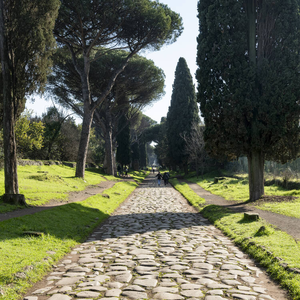New Delhi: The Embassy of Italy in India inaugurated an exhibition dedicated to the site “Via Appia. Regina Viarum”, at the Italian Embassy Cultural Centre here on Monday.
Ambassador-designate, Antonio Enrico Bartoli, and the Italian UNESCO delegation, headed by the Italian Permanent Representative at UNESCO, Liborio Stellino, were also present on the occasion.
The World Heritage Committee, at its meeting in New Delhi, inscribed the ‘Via Appia. Regina Viarum’ on the World Heritage List on July 27, making it the 60th Italian site to be recognised by UNESCO.
This is the first candidacy sponsored directly by the Italian Ministry of Culture, which coordinated all the stages of the process and prepared all the necessary documentation for the application for inscription on the World Heritage List.
The result, said the Italian Embassy in New Delhi, is the fruit of teamwork that has seen the involvement of many institutions: four Italian regions (Lazio, Campania, Basilicata, and Apulia), 13 metropolitan cities and provinces, 74 municipalities, 14 parks, 25 universities, numerous representatives of local communities, as well as the Ministry of Foreign Affairs and International Cooperation and the Pontifical Commission for Sacred Archaeology of the Holy See.
The Appian Road was the first of Rome’s great roads built with innovative techniques, and true masterpieces of civil engineering that complemented the natural roads and constitute the most enduring monuments of Roman civilisation. The route, begun in 312 B.C. by Censor Appius Claudius the Blind to connect Rome to Capua, was later extended to Benevento, Venosa, Taranto, and Brindisi, a bridgehead towards Greece and the East, as the Roman conquest progressed, and along the Via Appia Traiana, the variant built by the Emperor Trajan in 109 A.D. to ease the route from Benevento to Brindisi.
“I would like to express my satisfaction and pride at the great result achieved. The ‘Via Appia. Regina Viarum’ is now a World Heritage Site. UNESCO has grasped the exceptional universal value of an extraordinary engineering work that over the centuries has been essential for trade, social and cultural exchanges with the Mediterranean and the East. Congratulations to all the institutions and communities that collaborated with the Ministry of Culture to reach this prestigious milestone. It is a recognition of the value of our history and identity, from which a new appreciation can arise that can bring economic benefits to the territories concerned,” Italian Minister of Culture, Gennaro Sangiuliano, said.
–IANS


Comments are closed.